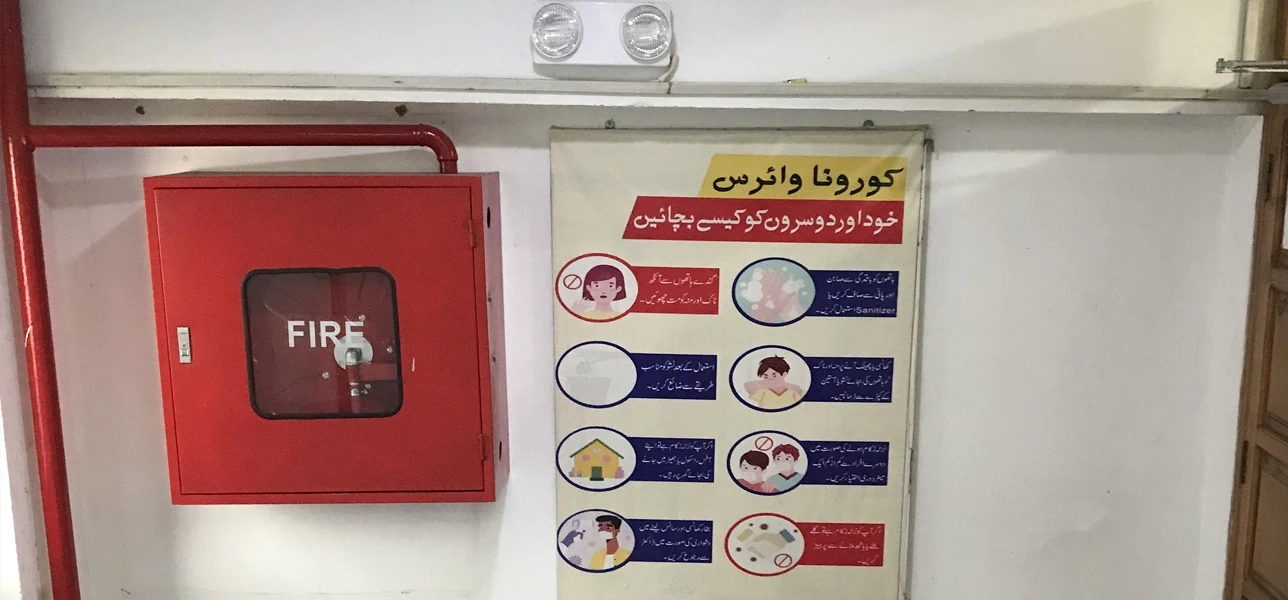Health and Safety
Hamid Leather, a distinguished name in the leather and garment manufacturing industry, not only excels in crafting elegant products but also places the utmost importance on the safety and well-being of its employees. Workplace safety is not just a regulatory obligation at Hamid Leather; it is a core value deeply embedded in the company's culture, reflecting its unwavering commitment to the health and security of its workforce.
Workplace Safety as a Fundamental Value
Hamid Leather recognizes that a safe workplace is essential for the physical, mental, and emotional well-being of its employees. The company considers workplace safety a fundamental value, and this commitment is evident in various aspects of its policies and practices.
Comprehensive safety training
The foundation of workplace safety at Hamid Leather is comprehensive safety training. Every employee, from the factory floor to the management team, undergoes rigorous safety training programs. These programs cover a range of topics, including the proper handling of machinery, emergency response procedures, and best practices for injury prevention. Regular refresher courses are conducted to ensure that safety knowledge is kept up-to-date.
State-of-the-Art Safety Equipment
Safety equipment is non-negotiable in Hamid Leather's commitment to workplace safety. The company provides employees with state-of-the-art protective gear, such as gloves, helmets, safety glasses, and other essential safety equipment. This not only protects employees but also encourages a culture of safety awareness.
Hazard identification and mitigation
Hamid Leather places a strong emphasis on identifying potential hazards and proactively addressing them. Regular safety audits and assessments are conducted to identify risks, and immediate measures are taken to mitigate them. This proactive approach reduces the likelihood of accidents and injuries.
Emergency Response Protocols
The company has well-defined emergency response protocols in place. Employees are trained to respond to a range of potential emergencies, from fires and chemical spills to medical incidents. Regular drills and simulations ensure that everyone is prepared to react swiftly and effectively in any situation.
Regular maintenance and inspections
Machinery and equipment are regularly inspected and maintained to prevent accidents caused by equipment failure. Preventative maintenance is a core practice, ensuring that all machinery is in optimal working condition.
Open communication channels
Hamid Leather fosters open communication channels that empower employees to voice safety concerns and report potential hazards. The company values feedback from its workforce and sees it as a crucial component in maintaining a safe workplace.
Crisis Response and Fire Fighting Training
In the unfortunate event of an incident, Hamid Leather has crisis response and support mechanisms in place. This includes medical assistance, counseling, and support for employees and their families. Hamid Leather give professional training to their staff and workers for quick response and fire fighting through courses & professional instructors.
Compliance with Regulations
Hamid Leather not only meets but often exceeds industry safety standards and regulations. The company's proactive approach to workplace safety extends beyond compliance to creating a culture of safety excellence.
Conclusion
In conclusion, Hamid Leather's commitment to workplace safety is not just about ticking boxes on a checklist; it is a profound dedication to the well-being of its employees. By investing in comprehensive safety training, state-of-the-art safety equipment, hazard identification and mitigation, and fostering open communication, Hamid Leather creates a safe haven for its workforce. Workplace safety is not merely a policy but a core value deeply embedded in the company's culture. As Hamid Leather continues to evolve and grow, its workplace safety practices serve as a model for the industry, demonstrating how a safe workplace is not only a legal requirement but a moral imperative, contributing to a productive, secure, and content workforce.

